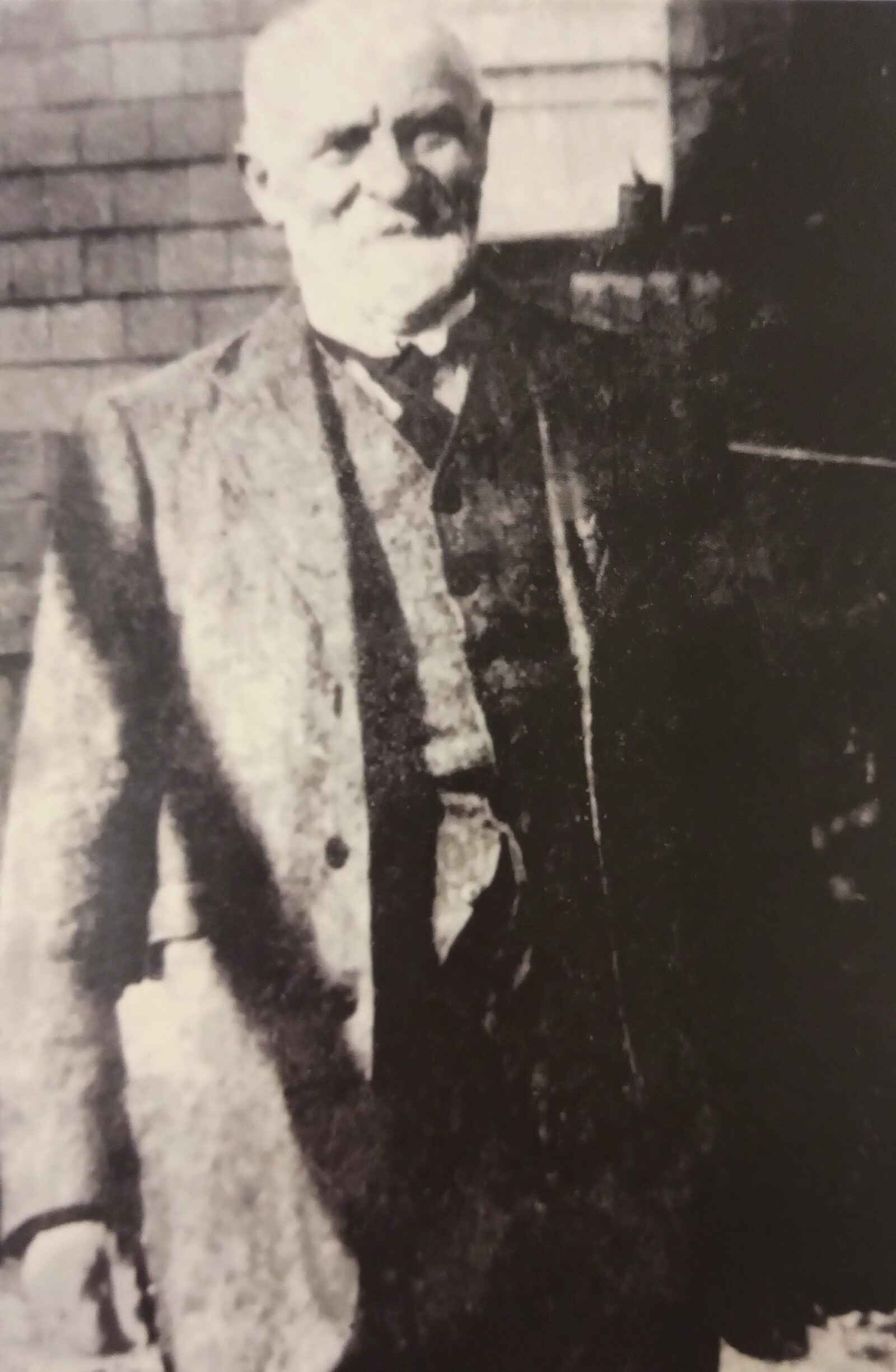Esgair Moel Woollen Mill

What is this building?
This is Esgair Moel Woollen Mill. It was originally built in Powys in 1760 during a time when the woollen industry was one of the most important in Wales.
The mill is still a working building where Dewi, the Museum weaver continues to make a variety of woollen goods.
These are sold in the Museum shop as well as many other places around Wales.

The mill was moved to the St. Fagans Museum in 1949.
Who first worked in the Woollen Mill?
From 1880 to 1932, Isaac Williams was the weaver in the mill. He made carthenni (blankets), shawl, flannel for making clothes and yarns for knitting socks.
He sold these to farmers and their families at the weekly market in Builth Wells.
They in turn would sell him their sheep’s fleeces to take back to his mill.

Isaac Williams wearing a flannel suit in the 1920s
How was the sheep’s wool made into woollen goods?
The whole process of making sheep’s wool into woollen goods takes place in this mill and it takes Dewi about 20 hours. Dewi does everything except shear the sheep!
The wool has to be washed, dyed, combed, spun and weaved.
Normally it takes Dewi about two hours of weaving to make a lady’s shawl.

Here is one of Dewi’s shawls being worn. It is on sale in the Museum shop.
Today an electric motor powers the machinery used to make the woollen goods. Previously this was done by a water wheel which is still inside the building itself, certainly not where you first expect to find it!
The water that was used to power the water wheel was pumped from the pool below. This was built in 1904 as a swimming pool for the Earl of Plymouth and his family. They lived in St. Fagans Castle which is near the mill.
The blankets produced in the mill are often seen stretched on the tenter frame outside. This allows them to dry and prevents them from shrinking.
Did you know?
We use several phrases today which are said to have their origin in the woollen industry:
- The word “flannel” most likely comes from the Welsh word gwlanen. When the coal mines were opened in South Wales, miners wore flannel shirts as they did not become clammy and cold in wet conditions.
- “On tenterhooks” - in a state of nervous anticipation. This is derived from the hooks which were used to tightly secure the woollen blankets on the tenter frame as it dried
- “Pull the wool over someone’s eyes” - to deceive a person.
- “Fleece someone” – cheat someone out of money by charging them too much.
- “Dyed in the wool” – having strong opinions and will not change.
- “Spinning a yarn” – telling lies.
- “Like sheep” – when people do not think independently but follow everyone else without question.
- “Woolly-minded” – confused or vague especially in thinking.
- “Spinster” – an unmarried girl, usually the eldest daughter who was responsible for spinning yarn to make clothes for the rest of the family.

Building facts:
- Original Location: Llanwrtyd, Powys (Breconshire)
- Date originally built: 1760
- Dismantled and moved to St Fagans: 1949
- Date opened to the public: 1952
- Listing status: Grade 2